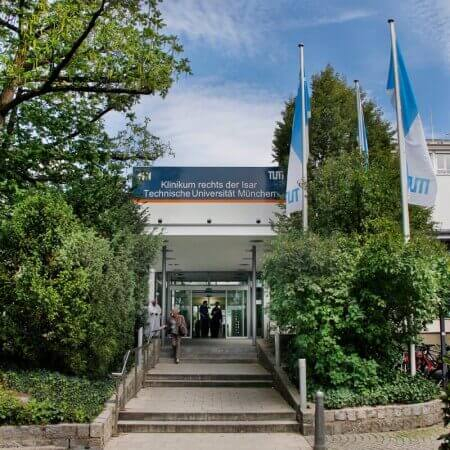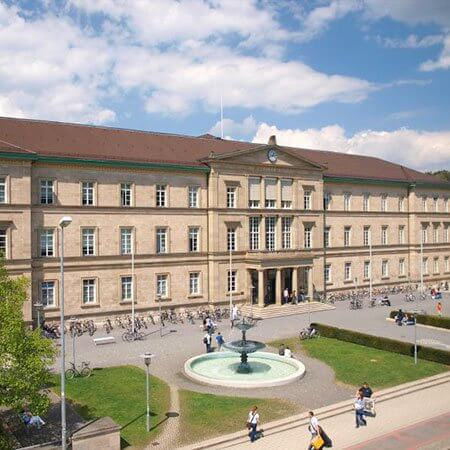Endometrioid ovarian cysts are cavities filled with brown fluid. They are called "chocolate" cysts for their appearance. These cysts are caused by endometriosis, which is the pathological overgrowth of the tissues of the inner lining of the uterus. If ovarian cysts are more than 3 cm in diameter, cause symptoms, or are constantly growing, they will be surgically removed. You can opt to undergo your surgical treatment abroad. You are welcome to visit the Booking Health website to check the prices and compare the cost of treatment at different foreign hospitals.
Content
- Diagnostics
- Principles of surgical treatment
- Cystectomy
- Ablation and combined cyst removal technique
- Other operations
- Why to undergo your treatment abroad?
Diagnostics
Diagnostics of endometrioid ovarian cysts are carried out as part of endometriosis diagnostics because foci frequently affect multiple organs at the same time.
Doctors clarify the complaints of patients and conduct a clinical examination and a gynecological examination. An ultrasound scan is used to confirm and clarify the diagnosis and assess the severity of endometriosis. With ultrasound diagnostics, doctors can find a cyst in the ovary, measure it, and distinguish it from a malignant neoplasm. Hospitals abroad use modern ultrasound techniques that are very accurate and involve the use of doppler ultrasonography, 3D mode, or color flow mapping.
In rare cases, ovarian imaging with an MRI scan may be required. This method is more accurate and is used in cases where a doctor has doubts about the diagnosis.
Any neoplasm in the ovary is a reason for diagnostic measures aimed at assessing the risk of its malignancy. Signs of malignancy can be determined or excluded with ultrasound scans. The ROMA index (calculated based on the levels of CA-125 and HE-4 tumor markers) is used in addition to ultrasound criteria.
Principles of surgical treatment
The following methods can be used for the treatment of endometrioid ovarian cysts:
- cystectomy involves cyst enucleation;
- ablation aims at cyst destruction;
- combined technique that implies the simultaneous use of cystectomy and ablation;
- resection of the ovary with a cyst (partial removal of the organ);
- oophorectomy (removal of the entire ovary);
- adnexectomy (removal of the ovary with the fallopian tube);
- sclerotherapy is the injection of fluid into the cyst, which stitches its walls together.
The operation to treat the disease can be performed using an open or laparoscopic technique. Doctors abroad use the laparoscopic technique in almost all cases. Operations are performed through three abdominal punctures. Such operations are less traumatic, provide minimal blood loss, and promote rapid patient recovery in the postoperative period.
Endometrial cysts are distinguished by their tight attachment to adjacent tissues. The neoplasm is most often fixed to the side wall of the pelvis, and it has to be separated at the beginning of surgery. The attachment of other endometrioid foci is also possible.
Regardless of the method of surgical treatment, following the completion of the operation, doctors place anti-adhesive barriers into the pelvic cavity. This is necessary to reduce the risk of adhesions, which often cause infertility due to impaired transport of the egg through the fallopian tube.
Cystectomy
Cystectomy is the main operation for the treatment of endometrioid ovarian cysts. Doctors use the stripping technique to remove the neoplasm. This implies that the cyst is enucleated in a blunt way without the use of a cutting instrument. Such an approach minimizes the risk of damaging healthy ovarian tissue.
Cystectomy performed in developed countries has the following features:
- it is performed through a minimally invasive laparoscopic approach;
- to avoid tearing healthy ovarian tissue, experienced surgeons enucleate the cyst without using excessive force;
- to avoid "burning" healthy ovarian tissue, a hemostatic matrix is used to stop bleeding instead of bipolar coagulation;
- the ovary is mostly not sutured, but if necessary, the sutures are left inside the ovary to reduce the risk of pelvic adhesions.
Ablation and combined cyst removal technique
The term "ablation" refers to the destruction of tissues by various energies. Doctors may use bipolar coagulation, laser vaporization, or coblation (the application of cold plasma).
This cyst removal option is not considered a first-choice method. Doctors perform enucleation whenever possible. If the neoplasm is, however, very tightly attached to the ovary, enucleation attempts provoke severe bleeding and significantly damage healthy tissue. This is unacceptable for women who have any reproductive plans because their ovarian reserve will be reduced. Along with it, the chances of getting pregnant will also decrease, which is critical for older women.
Healthcare professionals at hospitals abroad also use a combined technique to remove endometrioid cysts in which a portion of the cyst is enucleated and the remainder is destroyed with energies. Some indications for the use of this technique are listed below:
- the size of the cyst is more than 8 cm;
- the location of the neoplasm near the large blood vessels that supply the ovary;
- revision surgery for disease recurrence.
Other operations
Much less often, doctors perform other types of operations for endometrial cysts. These are the following:
Ovarian resection involves the partial removal of the organ. The ovary and endometrial cyst are excised with a cutting instrument. The disadvantage of this technique is the inevitable capture of healthy tissue, which leads to diminished ovarian reserve. Such an approach is therefore used for a large cyst that is tightly attached to the ovary and located near the blood vessels, if a woman does not have any reproductive plans.
Ovariectomy and adnexectomy allow doctors to remove the ovary completely if a woman has a very large cyst, multiple cysts, and a persistent recurrent course of endometriosis. The removal of the ovary is undesirable in women who have any reproductive plans, as this operation may cause diminished ovarian reserve.
Sclerotherapy is an alternative to total or partial ovary removal for women who have any reproductive plans. This is a minimally traumatic procedure in which doctors puncture the endometrioid cyst with a needle, remove fluid from it, wash it with saline solution, and then inject a sclerosant inside. They usually use ethyl alcohol. The sclerosant stays in the ovary for 10-20 minutes and is then evacuated. Alcohol damages the walls of the cyst from the inside. At first, they stick together, and then they grow together. The effect of the procedure is temporary, with a high probability that the cyst will develop again in the future. However, on the other hand, if the ovarian reserve is completely preserved, a woman can have time to become pregnant naturally or with the help of IVF. The further treatment of the endometrioid cyst will be carried out by doctors after the implementation of reproductive plans, if necessary.
Why to undergo your treatment abroad?
You are welcome to use the Booking Health service to find out the cost of treatment for your disease, compare prices at different hospitals, and choose a diagnostic and treatment program at the best price. Our specialists will help you select the best medical center for the treatment of endometrioid cysts.
There are a few reasons for you to undergo your treatment abroad. These are the following:
- accurate diagnostics allow doctors to optimally plan the treatment of endometrioid ovarian cysts and exclude a malignant process;
- all operations are performed using minimally invasive laparoscopic techniques, that is, through short abdominal incisions;
- doctors use special surgical techniques to preserve healthy ovarian tissue as much as possible;
- to stop bleeding without cauterizing normal ovarian tissue, hemostatic matrices are used instead of bipolar coagulation;
- most women have a sufficient ovarian reserve after the completion of their treatment for the disease to get pregnant;
- specialists use anti-adhesive barriers to prevent the formation of pelvic adhesions.
When you make an appointment for your reception for treatment abroad through the Booking Health service, the cost of treatment for you will be lower than when you contact a hospital directly. Prices will be reduced due to the lack of additional coefficients for foreign patients. When you select a medical care program through the Booking Health service, you will receive insurance that will protect you from additional medical expenses. This means that the initial cost of treatment will not increase after the start of the medical care program, even if there is a need for additional procedures.
Authors:
The article was edited by medical experts, board-certified doctors Dr. Nadezhda Ivanisova and Dr. Sergey Pashchenko. For the treatment of the conditions referred to in the article, you must consult a doctor; the information in the article is not intended for self-medication!
Sources:
National Center for Biotechnology
Web MD




















